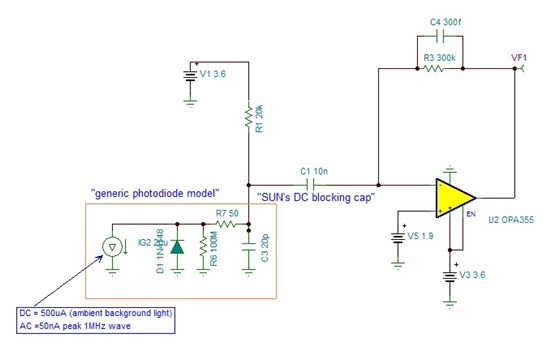Dear All,
The transimpedance amp is designed with OPA355 as shown below.
The photo detector is receiving approximately 50nA reflection signal from the laser.
Then the output voltage at VF1 is lower and lower when I increase the modulating frequency such as 200kHz, 300kHz etc .
When it is set to 1MHz (750nsec on and 250nsec off), the output voltage is very low and almost flat.
Is it because of opamp's low GBP?
When I observe the phase between the input signal and the output signal, there is phase shift of 150nsec.
Why there is phase delay of 150nsec between input and output?
Thanks,
Thomas


